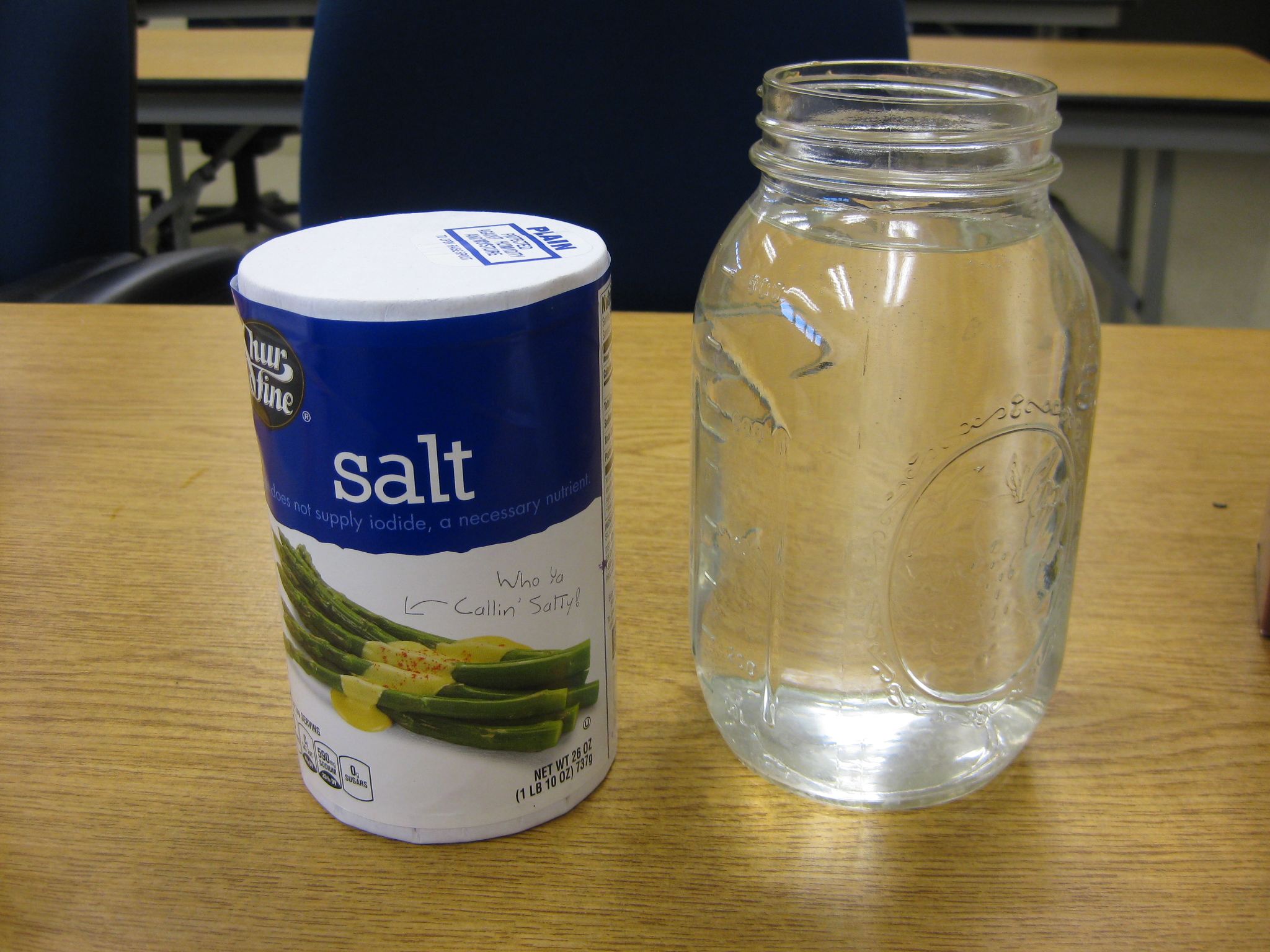

Introducing Molarity with Hot Drink Mixes: A Friendly Chemistry Teaching Tip
Introducing the concept of molarity (M) can be a straight forward and fun process by using powdered hot drink mixes. Read here or watch the video below to see how to present this concept to your students!
The items you'll need for this activity include: powdered hot chocolate or apple cider mix packets, plastic spoons, styrofoam cups, water, markers or pens which can write on cups, a quart canning jar or container which indicates 1 liter and box of table salt (sodium chloride.)
Begin by providing all of your students with a packet of drink mix, a cup and spoon. Using the labeling on the packets or the box, have them determine the mass of the contents of the packets. If you have access to a scale or balance, have them find the mass of their drink packets. Tell them that this amount is the mass of one mole (formula weight) of hot drink mix. Have them write on the packet "1 mole" as well as the formula weight. (Note that this amount is not the actual formula weight of the hot drink mix, but that they will use this amount for their activity.)

Next, have them take their cup and write 1 liter = 1000 ml on the side of it. Tell them that their cups don't actually hold 1 liter, but for the sake of the activity, that they will pretend their cups can hold 1 liter of water.
At this point introduce the components of a solution: solute and solvent. In this case, the hot drink mix is the solute and the water is the solvent. Have them write these terms (solute and solvent) on the mix packet and cup, too!
Next, have your students heat their water; a microwave oven makes this easy. If you need to provide water heated by a hot plate or stove, caution your students when handling the hot water to avoid accidents.
The next step is to have your students open and add their drink mixes to the hot water. Tell them that they are preparing a 1 M solution or a solution of 1 molarity. Emphasize that molarity is indicated by an uppercase M versus the lower case m used to indicate moles. Have them stir their hot drink and enjoy.

Next, ask them how they would go about preparing a 2 M hot drink solution. They should respond by saying they would take two mix packets and add it to the 1 L solution of water. Query other mix concentrations. Point out that the greater the molarity of the solution, the greater the concentration is of the solute within the solvent. It is important that they understand that one always mixes the needed solute into 1 liter of solvent.
Move now to your quart jar. Tell them that 1 liter is slightly less than the English 1 quart measurement. If you have access to a container with 1 liter increments, you can show them how 1 quart compares to 1 liter. Fill the jar with 1 liter of water (just a little less than full with the quart jar.)

Next, show them your container of salt. Ask them how they would go about preparing a 1 M solution of salt water. Remind them that a 1 M solution consists of 1 mole of solute (salt) disolved into 1 liter of solvent (water.) Hopefully, your students will recall that they'll need to determine the mass of 1 mole of salt (formula weight or molar mass) and get that amount to add to 1 liter of water.
Continue by calculating the formula weight for the salt (sodium chloride) with them (58 grams.)
Next, if you have access to a scale or balance, have them weigh-out 58 grams of the salt and add it to 1 liter of water. Emphasize that they've now prepared a 1 M sodium chloride solution. For more practice, have them prepare a 2 M solution (58g x 2 = 116 g NaCl into 1 liter water.) or a 0.5 M solution (58 g x 0.5 = 29g.)
Here is a video to help you present this activity: Hot Drink Packets and Molarity
www.youtube.com/watch?v=OrFE5lKHYrw&feature=youtu.be
Share with your students that understanding molarity is very important when chemists work with dangerous chemicals. Point out that dangerous chemicals are better handled when disolved into solutions. Strong acids and bases are commonly used in solutions and obvioiusly knowing the strenghth or molarity of the solution is important. Here is a link to a science laboratory supply company where these dangerous chemicals can be purchased: https://www.wardsci.com/store/catalog/product.jsp?catalog_number=9703308
Note this link takes you to "hydrochloric acid solution." If you scroll down, you can see the various strengths of hydrochloric acid you can purchase ranging from 12M (extremely strong) to 1M (relatively weak.) Notice that in some strengths the symbol "N" is used which stands for Normal. The term normal and molar mean the same thing. For example, a 1N solution is the same as a 1M solution. However, a 1% solution is NOT THE SAME! A 1% solution means you have mixed 1 part of a certain strength compound into 99 parts of solvent. Point this out to your students. Molarity = Nomality but they are not equal to %.
-------------------------------------------------------------------------------------------------------------------------------------------------
Do you have ideas and photos to share with other Friendly Chemistry users? Send them to us at our email address below and we'll post them for others to see.
Questions? Email us at friendlychemistryinfo@gmail.com For more information about Friendly Chemistry, visit www.friendlychemistry.com